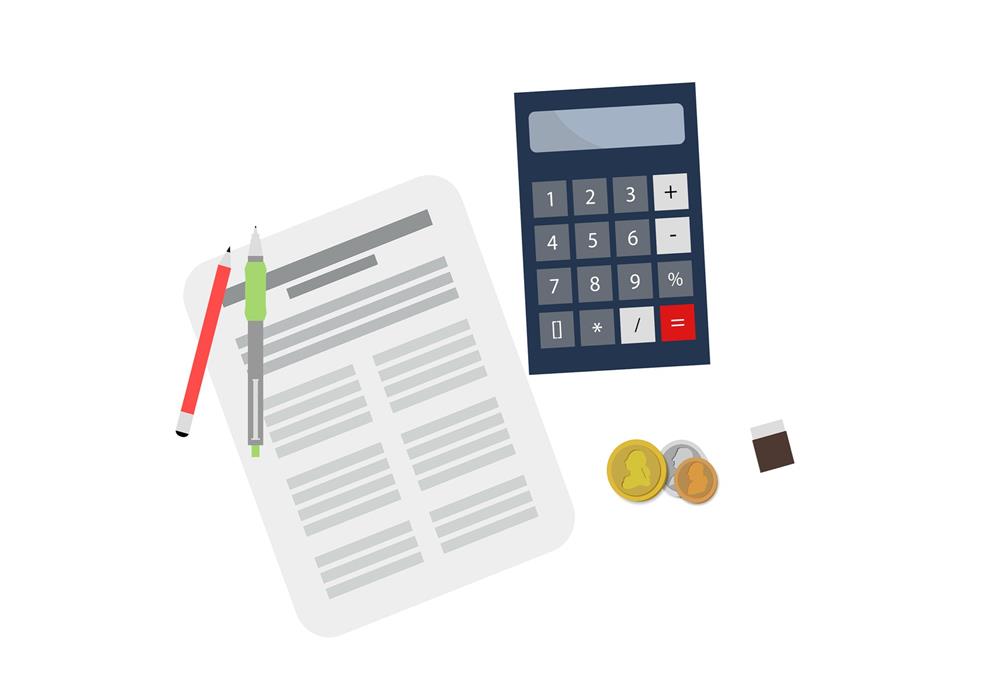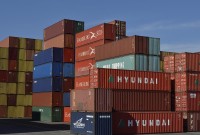- Home
- Business Processes
- Industry Knowledge
- Aerospace Industry
- Automotive Industry
- Banking Domain
- BFSI Industry
- Consumer/ FMCG Industry
- Chemicals Industry
- Engineering & Construction
- Energy Industry
- Education Domain
- Finance Domain
- Hospitality Domain
- Healthcare Industry
- Insurance Domain
- Retail Industry
- Travel and Tourism Domain
- Telecom Industry
- Leadership Skills
- eLearning
- Home
- Functional
- Procure to Pay
- Import Export Documents
Import Export Documents
This article discusses the key documents that gets generated during the import/export process. These documents may apply to both invoice to cash as well as order to cash cycles. Also learn the major custom docments for India.
Given below are the documents generated during customs process:
Purchase Order - Export
The international purchase order is the confirmation you require from the buyer that there exists a commercial deal and that you should prepare and ship the goods accordingly. The purchase order will include all details of price, transport and payment agreed between you and the buyer, as well as some of the buyer's concerns. Buyer may also request you to include the statutory conditions/declarations of his country. For example, his customs department may require a certificate of origin issued by a Chamber of Commerce to be presented for customs clearance.
Purchase Order - Import
You can use the Create purchase order form to create an import order for a vendor. In most of the ERP’s you need to select the Import Order check box or use some field to specify that the purchase order is for import purposes. In some systems, if the vendor that you selected is a foreign vendor and the Purchase order is selected in the Purchase order field, the Import order check box is selected automatically. The Customs duties' Tax Calculations and associated tax components are defaulted to import POs based on some predefined parameters such as Supplier Category or Benefit ID.
Proforma Invoice
Proforma Invoice is the initiating document of the international transaction. Once the importer receives your pro forma invoice, he will consider it as final commitment to the transaction. He may need the pro forma invoice to either obtain a foreign exchange allocation (applicable in some countries), for making application for an import permit, or for applying application for the establishment of a documentary credit. You must ensure that the information given in the pro forma invoice is complete, clear and concise., information lacking in this document will be absent in later payment and transport arrangements, which could ultimately lead to problems in the processing of the order.
Proforma Invoice - STP / EHTP
STP bonded warehouses remain under customs control. The materials entered in to a bonded warehouse is obtained without paying any duty whether import or excisable. Under an STP scheme, all materials are exempted from customs and excise duties including the materials sourced locally. Hence, a control on such dutiable materials is required from customs and excise authorities as such materials are only used for the manufacture and export of STP units subjected to approval, for every consumption. STP units can import all capital goods those required for creating STP infrastructure unless the same are in the prohibited list. STP units are allowed to import equipment on outright purchase or loan or free cost or lease basis after applying for import certificate in the prescribed format. To apply for import certificate the unit needs to attach “Proforma Invoice” which should necessarily state the name and location of STP unit and the name of supplier and country of origin.
Import Invoice
A commercial invoice is a document used in foreign trade. It is used as a customs declaration provided by the person or corporation that is exporting an item across international borders. Although there is no standard format, the document must include a few specific pieces of information such as the parties involved in the shipping transaction, the goods being transported, the country of manufacture, and the Harmonized System codes for those goods. A commercial invoice must also include a statement certifying that the invoice is true, and a signature. A commercial invoice is used to calculate tariffs, international commercial terms (like the Cost in a CIF) and is commonly used for customs purposes. When the accounting unit is an importer, it is referred to as Import Invoice.
Export Invoice
A commercial invoice is a document used in foreign trade. It is used as a customs declaration provided by the person or corporation that is exporting an item across international borders. Although there is no standard format, the document must include a few specific pieces of information such as the parties involved in the shipping transaction, the goods being transported, the country of manufacture, and the Harmonized System codes for those goods. A commercial invoice must also include a statement certifying that the invoice is true, and a signature. A commercial invoice is used to calculate tariffs, international commercial terms (like the Cost in a CIF) and is commonly used for customs purposes. When the accounting unit is an exporter, it is referred to as Export Invoice.
Import Certificate
Import Certificates are a proposed mechanism to implement balanced trade, and eliminate a country's trade deficit. An import certificate, (ICs) represent the right to import a certain dollar amount of goods into the country and is issued to exporters in an amount equal to the dollar amount of the goods they have exported. Import certificate can be utilized once. Similarly, to control imports, some governments prescribe that the import can only be done against valid import certificates for certain category of goods.
Bill of Entry
Bill of Entry is a declaration by an importer or exporter of the exact nature, precise quantity and value of goods that have landed or are being shipped out. This is usually prepared by a qualified customs clerk or broker and it is examined by customs authorities for its accuracy and conformity with the tariff and regulations. The Bill of Entry (BOE) worksheet is created from import PO or another BOE in typical ERP system. When you save a new BOE, actual customs duties are determined and calculated for the BOE. When the imported goods arrive at customs, the BOE is submitted to the customs authorities along with other shipping documentation. You update the BOE based on the assessment by customs officials. Once the BOE is in Assessed or Closed status, no changes can be made and customs duties will not be recalculated in the system.
Airway Bill (HAWB / MAWB) - Import & Export
Air Waybill (AWB) or air consignment note refers to a receipt issued by an international airline for goods and an evidence of the contract of carriage. There are several purposes that can be served by an airway bill, but its main functions are Contract of Carriage; Evidence of Receipt of Goods; Freight Bill; Certificate of Insurance and aids Customs Declaration. International air waybills that contain consolidated cargo are called master air waybills (MAWB). MAWBs have additional papers called house air waybills (HAWB). Each HAWB contains information of each individual shipment (consignee, contents, etc.) within the consolidation. International AWBs that are not consolidated (only one shipment in one bill) are called simple AWBs. A house air waybill can also be created by a freight forwarder. When the shipment is booked, the airline issues a MAWB to the forwarder, who in turn issues their own house air waybill to the customer.
Bill of Lading - BL – Import & Export
A bill of lading (sometimes abbreviated as B/L or BOL) is a document used in the transport of goods. It serves several purposes in domestic and international trade. A bill of lading is generated by a shipper, details a shipment of merchandise, gives title to the goods, and requires the carrier to deliver the merchandise to the appropriate party. Because the bill of lading represents title to the goods detailed upon it, it can be traded in much the same way as the goods may be, and even borrowed upon if desired. This is a very important and common document used in export and import trade globally and for letter of credit and Documentary Collection transactions, it is important to retain title to the goods until the transaction is complete. This means that the bill of lading remains a vital part of international trade.
Packing List – Import & ExportIn Exports/Imports Packing list is also a commercial document. Packing list shows how the material was packed. It is an itemized list of articles usually included in each shipping package, giving the quantity, description, and weight of the contents. Prepared by the shipper and sent to the consignee for accurate tallying of the delivered goods.
High Sea Sale Agreement & Invoice
High Sea sales (HSS) is a sale carried out by the carrier document consignee to another buyer while the goods are yet on high seas or after their dispatch from the port/ airport of origin and before their arrival at the port / airport of destination. Hence, high sea sales is a sale made, of a consignment, while its in sea only. HSS is accepted under the import trade control regulation. HSS contract/ agreement should be signed after dispatch of goods from origin & prior to their arrival at destination. The agreement should be on stamp paper. On concluding the HSS agreement, the B/L should be endorsed in favor of the new buyer.
CE Certificate - Import
CE marking is a declaration by the manufacturer that the product meets all the appropriate provisions of the relevant legislation implementing certain European Directives. CE marking gives companies easier access into the European market to sell their products without adaptation or rechecking. The initials "CE" do not stand for any specific words but are a declaration by the manufacturer that his product meets the requirements of the applicable European Directive(s). The CE Mark (officially CE Marking) is a mandatory conformity mark on many products placed on the single market in the European Economic Area (EEA). By affixing the CE Marking, the manufacturer, its authorized representative, or person placing the product on the market or putting it into service asserts that the item meets all the essential requirements of all applicable EU directives and that the applicable conformity assessment procedures have been applied. For some products this can only be achieved by using an external test house which evaluates the product and its documentation, however, in about 90% of cases it can be achieved by a self-certification process.
ARE - 1 Form
FORM A.R.E. 1 is an application for removal of excisable goods for export by (Air/Sea/Post/Land) whether without payment of duty or on payment of duty with a claim for rebate submitted in excise. Both the original & duplicate copies, duly endorsed by custom is required to be submitted to the Excise authority (division office, where bond had been executed.) ARE-1 copies are not for buyer or seller. All the four copies of ARE1 go to the excise authorities. Fifth optional copy may be retained by the manufacturer exporter for their records. Invoice is prepared for commercial documents.
SEZ/EOU/EHTP/STPI/BTP/FTWZ Approval letters
The term SEZ that stands for Special economic zones in which the various units like EOU/EHTP/STPI are located which mainly process goods and services for export. Supplies to SEZ are exempted from payment of duty. All clearances to SEZ/EOU/STPI/EHTP are treated as deemed export for the DTA unit. These units should have approval letters to qualify as special units.
Procurement Certificate
For the import of duty free capital goods or raw materials, unit has to make an application to Customs along-with copy of invoice duly attested, packing list, and Import certificate from STPI in case of STP, HTPI units, IGMS & Airway Bill or Bill of lading. The department will issue a serial numbered Procurement Certificate for duty free imported goods. The EOUs and STP/EHTP/EPZ/SEZ units obtain a procurement certificate for clearing goods duty-free under the relevant exemption notifications at the port of import/airport etc.
Re Warehousing Certificate
Import of goods are allowed without payment of duty on the basis of the particulars in the Procurement Certificate, the fulfillment of the conditions of duty exemption under EOU will become complete only when Re-warehousing Certificates (RWCs) are received from the concerned jurisdictional Central Excise Authorities. Once after arrival of goods at STP or EOU premises, an intimation regarding arrival of goods at STP / EOU unit is effected to EOU/STP customs authorities. The EOU / STP authorities issues re-warehousing certificate after satisfying on arrival of such goods on physical verification of goods at STP / EOU premises. Necessary bond registers have to be maintained for each entry or removal of goods.
Redemption Letters
Redemption letters are issues by DGFT so that the advances and Bank Guarantees etc. given at the time of obtaining EPCG licenses can be redeemed. Once the redemption letter has been issues the importer can take the same to the authorities for cancellation of bond/BG/LUT.
Refund documents / DBK Applications
Under Duty Drawback Scheme (DBK) relief of Customs and Central Excise Duties suffered on the inputs/components used in the manufacture of goods exported is allowed to Exporters. The admissible duty drawback amount is paid to exporters by depositing it into their nominated bank account. Section 75 of the Customs Act, 1962 and Section 37 of the Central Excise Act, 1944, empower the Central Government to grant such duty drawback. Customs and Central Excise Duties Drawback Rules, 1995 have been framed outlining the procedure to be followed for the purpose of grant of duty drawback (for both kinds of duties suffered) by the Customs Authorities processing export documentation.
Shipping Bill – Export Promotion Copy
Export Promotion is a scheme to promote the export of some specific articles (metals, etc.) where you get subsidy from the government at an prescribed rate known as duty drawback. Please see the definition of duty drawback in previous paragraph. Export Promotion copy may be defined as " the document stating the calculations of drawback with rates of drawback & the weight/value of article (whichever is lower) mentioned on it. It is prepared only if we have to claim the drawback on any specified invoice or export bill. The prescribed checklist together with the supporting export documents and challan evidencing payment of duty and/or cess, if any, shall be presented to the proper officer of customs for making an order permitting clearance, for loading of goods for exportation, after examination of the export goods if so required. After making an order under regulation 5, the proper officer shall generate the original (customs copy), exporter’s copy, exchange control copy and the export promotion copy of shipping bills. The original (customs copy) of the shipping bill and the checklist shall be retained by the proper officer. The exporter’s copy, exchange control copy and the export promotion copy of shipping bill shall after suitable endorsements, be handed over to the authorized person.
Show Cause Notice / Demand Notice
When duty has not been levied, short levied, or erroneously refunded or interest not paid, part paid or erroneously refunded, a notice demanding the said duties/interest is required to be issued by the Department. The demand notice or show cause notice should give a clear description of the allegations and charges against the persons concerned. It should give particulars of facts, which furnish the reason for issue of the demand notice or show cause notice. The show cause notice must disclose all the materials/evidence relied upon in making the allegations. An opportunity of personal hearing must be offered in the Show cause notice. The show cause notice must give full designation and address of the authority to whom the written submission is to be made.
TR6 Challan
In India, TR6 challan is used to pay the central excise/service tax/customs duty and some other types of statutory dues. Whenever money is deposited into PLA then the TR6 challan should be updated.
Certificate of Origin
A Certificate of Origin (often abbreviated to C/O or COO) is a document used in international trade. It is a printed form, completed by the exporter or its agent and certified by an issuing body, attesting that the goods in a particular export shipment have been wholly produced, manufactured or processed in a particular country. The “origin” does not refer to the country where the goods were shipped from but to the country where they were made. The certificate of origin must be signed by the exporter, and, for many countries, also validated by a Chamber of Commerce, and in the case of certain destination countries by a consulate. Chambers of Commerce offer certificate of origin services, amongst other organizations. Companies may consult the Chamber Directory on the World Chambers Network, the official global portal of Chambers of Commerce dedicated to electronic international trade, to find their nearest chamber who may offer this service.
Certificate of Quality and Quantity / Pre Shipment Inspection
Pre-shipment inspection, also called pre-shipment inspection or PSI, is a part of supply chain management and an important and reliable quality control method for checking goods' quality while clients buy from the suppliers. After ordering a number of articles, the buyer lets a third party control the ordered goods before they are dispatched to him. Normally an independent inspection company is assigned with the task of the PSI, as it is in the interest of the buyer that somebody not connected with the deal in any way verifies the amount and quality. This way the buyer makes sure, he gets the goods he paid for. The process involves, checking the total amount of goods and packing, controlling the quality and/or consistency of goods, checking of all documentation, including test reports, packaging list, and verifying compliance with the standards of the destination country (e.g. ASME or CE mark). After the inspection, a certificate of quality and quantity is issued.
Certificate of Insurance
Certificate of insurance is a document issued by an insurance company. It certifies that an insurance policy has been bought, and shows an abstract of the most important provisions of the insurance contract. In marine insurance (where cargo is insured against a floating insurance policy), COI serves to assure the consignee that insurance is in effect for the goods in transit and a proper policy will follow. This is also called insurance certificate. This might be required from the buyer before the shipping of the goods take place.
Related Links
You May Also Like
-
The Outbound process starts with routing the shipments. The Outbound execution process starts from the point when pick tasks are completed for an outbound shipment and ends at the point where the outbound packages are loaded into trailers. The Warehouse Outbound process includes managing and controlling outgoing materials starting from the download of orders through to the shipping of products from the warehouse.
-
This article discusses the key documents generated during the order to cash process. Learn the documents that are created while processing AR transactions and business significance of each of these documents. This article is applicable to all ERP's and systems.
-
One of the warehousing best practices that retailers like Walmart, Amazon, and Target have adopted is known as cross-docking. During this process the inbound products are unloaded at a distribution center and then sorted by destination, and eventually reloaded onto outbound trucks. In real parlance, the goods are not at all warehoused but just moved across the dock (hence the name).
-
Resource Planning is the process of planning for expected workload and determining the number of resources required to complete each activity in the warehouse. There are many types of warehouse positions, and they also vary by the employer, the scale of operations and location. Discussed here are generic positions applicable to warehouse management processes.
-
Transport operations are often divided into full load and part load and due to economies of scale, the unit costs are higher for part loads. Our customer needs several part loads delivering, so it can reduce costs by consolidating these into full loads. Then it gets all the part loads delivered to a warehouse near the suppliers, consolidates them into full loads, and pays the lower costs of full-load transport to its operations.
-
Types of Inventory Count Processes
While dealing with lots of inventory in a warehouse, lots of things can go wrong. Shipments may not have the right number of units in them, or they could get damaged somewhere along the supply chain. Discrepancies in the stock may arise as part of every inventory control, and need to be corrected immediately after the inventory control procedure has been finished.
-
Warehouses may seem like a simple, straightforward concept, but they actually include a variety of different types of warehouses that all have their own niche. The type of warehousing that’s right for you depends on your specific industry, location, and needs. From private warehousing, distribution centers, and climate-controlled warehouses, there’s an option to suit every business.
-
This article discusses the key documents that gets generated during the import/export process. These documents may apply to both invoice to cash as well as order to cash cycles. Also learn the major custom docments for India.
-
What is Invoice to Cash Process
In this article, we will explore the business process area known as; Invoice to Cash; Also known as I2C. Learning objectives for this lesson are: Meaning of Invoice to Cash Process; Sub Processes under Invoice to Cash; Process Flow for Invoice to Cash; Key Transactions Fields; Key Setups/Master Data Requirements.
-
When a customer wants a product that has been stored in the warehouse, the same need to be picked off the shelf (or off the floor) and get it ready for shipping. Depending on how big is the warehouse, picking can take a while. (Many distribution centers cover more than 1 million square feet.). Hence, warehouse order picking methods are an important aspect within any warehouse.
Explore Our Free Training Articles or
Sign Up to Start With Our eLearning Courses

About Us
Learning
© 2023 TechnoFunc, All Rights Reserved










